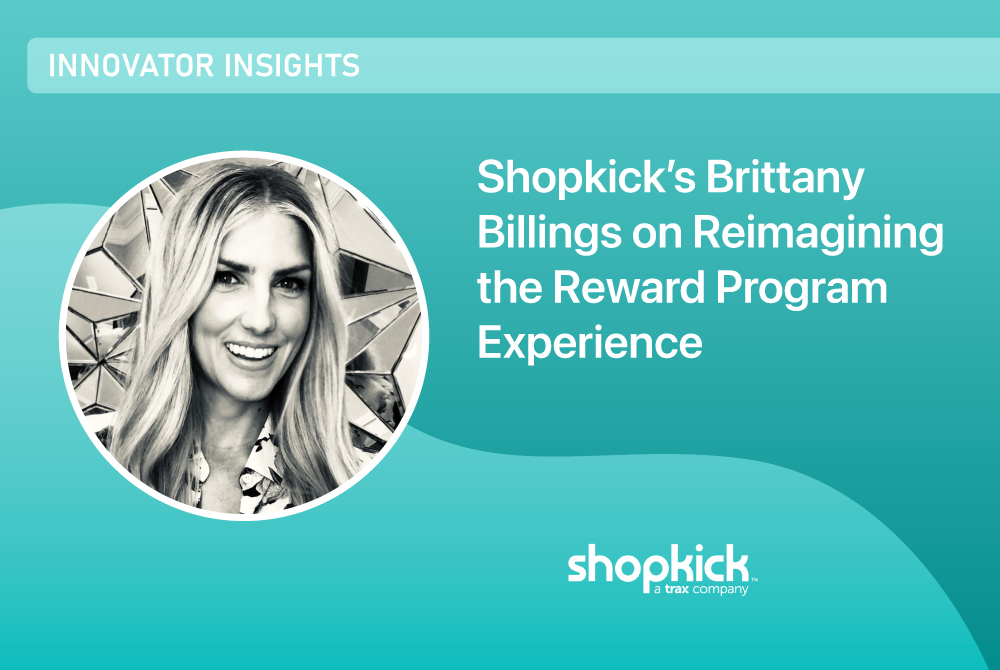When Brittany Billings talks about people who have expectations about the value a rewards program should provide, she doesn’t use the term “penny-pinchers.” She doesn’t suggest they’re desperate for some kind of freebie. She simply calls them “Shopkickers” – a term that’s as much about joy as it is a reference to the brand where she works.
Billings says she has learned, in her role as EVP of marketing at Denver-based Shopkick, that consumers are grappling with a complex web of challenges as they make purchasing decisions in 2023. This includes rising costs of grocery staples, the need to pay down debt and the choice of whether to shop at local stores.
These learnings aren’t based on Billings’ intuition. They come directly from a survey of more than 11,000 consumers earlier this year that showed the impact of the economic headwinds on buying habits. Nearly half, for example (47%) said they would be spending less overall in the next three months, while the same percentage said they are focused on searching for sales.
“Our core customer is what we call the chief household officer,” Billings told Brand Innovators. “She is the mother, the wife and often the house CFO as well. She’s making all the buying decisions, and almost all of them have identified an increase in pricing of everyday goods. As a result, brands can’t rely on loyalty as much as they have in the past because consumers are having to make much more difficult decisions and trade-offs.”
This backdrop repositions the appeal and the need for a compelling rewards program, Billings argued. Shopkick’s approach is unusual in that it not only allows consumers to earn rewards for what they buy but rewards for other actions too. These actions range from consuming content prior to a transaction, to simply scanning an item with their smartphone, shoppers earn ‘kicks’ for the actions they take. As a result, she said consumers come to see the brands on its platform as invested in learning more about them, rather than simply dangling incentives to increase their share of wallet.
“This is not just about, “Yeah! I get to go to the Bahamas” thanks to a rewards program,” she said. “This is about, ‘Oh my gosh, how can I continue to put food on the table? How can I pay for my electricity? How can I put gas in my car?”
DIY reward programs and partnering isn’t an either-or choice
Many large quick service restaurant (QSR) chains, hospitality brands and airlines already have their own, proprietary rewards program. This could lead marketers to wonder whether they should develop an in-house program too, or work with the likes of Shopkick. According to Billings, the answer can be both.
“Loyalty programs are really expensive to execute, and to maintain,” she said. “Also, if you think of all of those consumers who are shopping with them, chances are 100% of them are not actually a member of your loyalty program. You can think of complementary programs like Shopkick as an acquisition tool for your own loyalty program. We certainly don’t say you can only shop through Shopkick. And for brands, like Consumer Packaged Goods (CPGs), where a proprietary loyalty program may not be viable because they don’t “own” the customer and the transaction (or again, the ROI can’t be justified), Shopkick can also serve as a viable, “out of the box” rewards mechanism. Through Shopkick, a CPG can establish a one-to-one connection with the shopper, send content and offers to their target audience, and gather customer insights that they do not receive from the retailers to inform marketing performance and velocity at shelf.“
Technology and data should make purchasing decisions easier
Think about what happens when you shop on an e-commerce site like Amazon: you set your location, your pricing filters, and other criteria as you search for an item. Billings pointed out that we lack such capabilities when we go shopping in the physical world.
A great rewards app should be designed to close that gap. It should form the basis of evolving beyond the punch card reward programs of yesteryear, where consumers would either leave the card at home or forget to get it punched.
“You need a digital experience that can help aid and support the shopping experience,” she said. “It’s about making a program easy and accessible for our users exactly where they are and where they want to shop and how they want to shop.”
Reward metrics can offer deeper insights than sales volumes
Marketers may be under increased pressure to help move products, but Billings suggested they consider how a rewards program could help them gain increased visibility into customer journeys. Shopkick can provide brand partners analytics on whether there was a switching cost associated with a purchase, while survey capabilities can ask consumers whether they had planned on making a transaction in the moment it happened.
These data points can help inform a more robust marketing strategy, said Billings.
“The economy is difficult right now for consumers, but also for marketers,” she said. “Understanding those sort of metrics, beyond just looking at how many units you have gone off a shelf is really, really valuable.”




